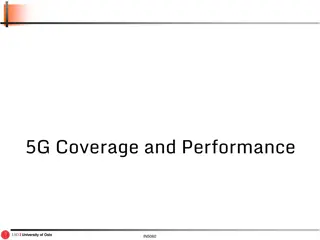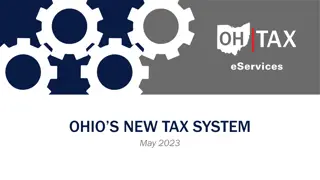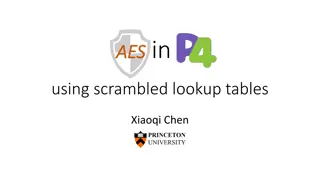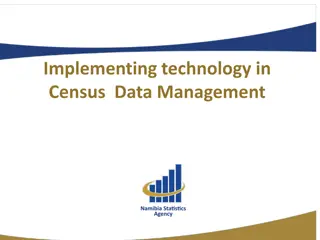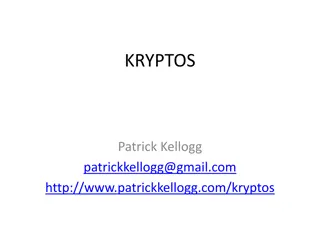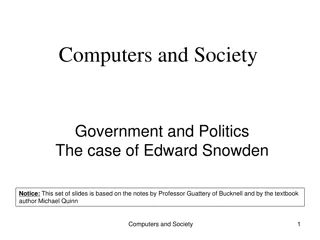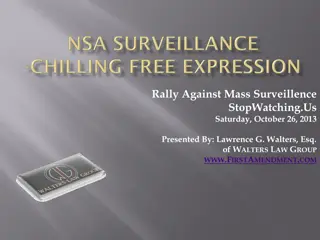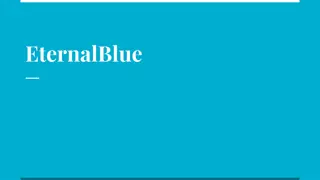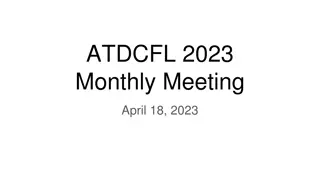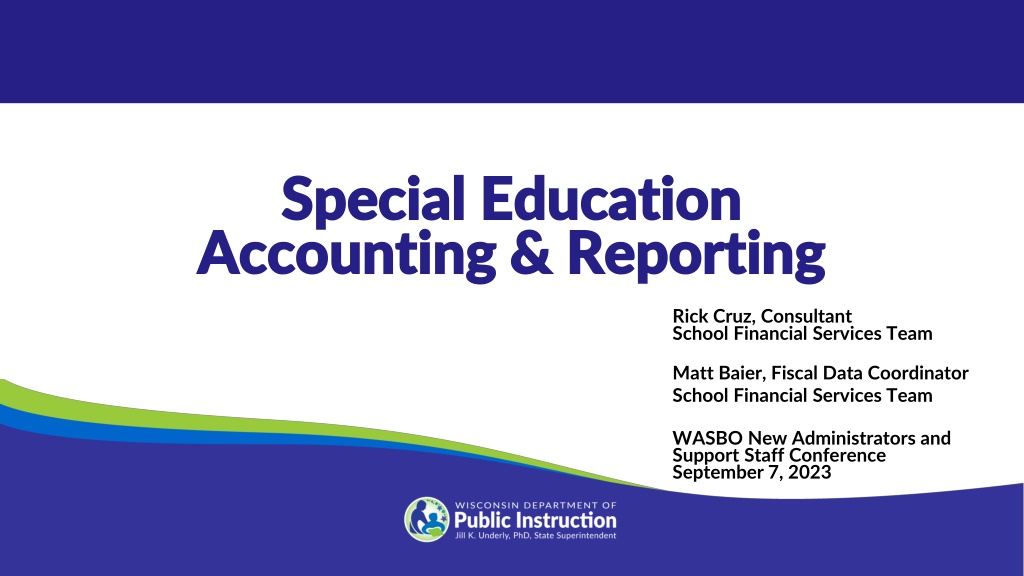
Understanding Special Education Funding and Reporting
Explore the complexities of special education funding sources, including Federal IDEA grants, State Aid programs, and special education fund reimbursements. Learn about the defined parameters for Fund 27 and the allocation process for various grants in the education sector.
Uploaded on | 0 Views
Download Presentation

Please find below an Image/Link to download the presentation.
The content on the website is provided AS IS for your information and personal use only. It may not be sold, licensed, or shared on other websites without obtaining consent from the author. If you encounter any issues during the download, it is possible that the publisher has removed the file from their server.
You are allowed to download the files provided on this website for personal or commercial use, subject to the condition that they are used lawfully. All files are the property of their respective owners.
The content on the website is provided AS IS for your information and personal use only. It may not be sold, licensed, or shared on other websites without obtaining consent from the author.
E N D
Presentation Transcript
Special Education Special Education Accounting & Reporting Accounting & Reporting Rick Cruz, Consultant School Financial Services Team Matt Baier, Fiscal Data Coordinator School Financial Services Team WASBO New Administrators and Support Staff Conference September 7, 2023
Topics Funding Sources & Eligibility Reminders Resources Ask questions when you have them
Special Education-Fund 27 Defined If the school or district had no students with disabilities enrolled, the cost would not exist. Only the excess costs of providing special education to children with disabilities (defined in s. 115.76) and school- age parents are eligible for categorical aid Students with IEPs during the regular or extended school years, not summer school Includes charges for services to other districts as a result of hosting a package or cooperative program 66.0301 School-Age Parent costs also charged to this fund
Non-Local Funding Sources Federal IDEA Part B Formula Grants Flow-through Early Childhood IDEA Part B Discretionary Grants State categorical aids Special Education and School-Age Parents (SPED) High-Cost Special Education (HCSE) Medicaid School-Based Services (SBS)
Funding Amounts 2023-2024 Program Program SPED/SAP High Cost SPED State Aid State Aid $558,036,700 $13,032,000 IDEA IDEA Transition Readiness Investment Grants $1,500,000 Transition Incentive Aid $3,600,000 IDEA Formula $219,035,270
Special Ed/School-Age Parents Aid Districts, CESAs, CCDEBs, independent charter schools (ICS) are eligible Reimbursement of eligible costs are prorated at around 25-30% Paid in six installments o 15% each month November - March o 25% in June Revenue Source 611 (Fund 27)
IDEA Part B Formula Grants Districts and independent charter schools are eligible Eligibility contingent on meeting conditions o Maintenance of Effort (MOE) o Signed Assurances Allocations based on formula Expenditures budgeted and reimbursed in current fiscal year Sources 341 (flow-through), 347 (preschool), and 342 (discretionary)
High-Cost Special Ed Aid Districts, CESAs, CCDEBs, independent charter schools are eligible Based upon claims from LEAs Eligible for 90% of locally-funded, IEP-driven individual student costs over $30,000 Prorated for available funding from sum-certain allocation Paid in June Source 625 High-Cost Special Education Aid (HCSE)
Medicaid School-Based Services Districts, independent charter schools, CESAs, CCDEBs Payment for student-specific expenditures, based on the billing submitted by the individual providing the direct services Significant administrative requirements Source 780, Federal Funding, % reimbursement If services are funded with federal money, then the LEA is responsible for time and effort reporting Medicaid-SBS link
Funding Eligibility Funding Eligibility DISCLAIMER: The following slides outline eligible costs in broad categories. They are not a definitive list of eligible costs. Eligible costs are specified by state and federal laws and program documentation.
State Aid & Federal IDEA Eligible The salary and benefits of special education teachers and related services staff may be funded through IDEA, state special education categorical aid, or a combination of both aid programs. Salary and benefits of licensed special education teachers, aides, and some support staff Licensure + Assignment = Eligibility Benefits eligible only when tied to salary Licensing Valid Licensing Codes
State Aid & Federal IDEA Eligible Aid-eligible staff costs OT/PT, SPED supervision/coordination, SPED transportation Special education teachers and aides Act 221 Pupil services positions Other support staff including clerical workers, attendance secretaries, pupil services directors, principals are not eligible School-age parent instruction (state aid only) SPED Eligibility and Coding
Act 221 Pupil Service Positions State aid-eligible share of FTE set by rule Social Workers: 59% Guidance Counselors: 10% School Nurses: 29% Psychologists: 84% Guidelines WUFAR Funding
State & IDEA Eligible Transportation Eligible only when required by IEP Eligible route must be 100% IEP-required Incidental Benefit Exception: picked up at same location; no additional costs; doesn t displace rider with IEP Newly Homeless Accommodation or Foster Care: up to 20 days
State & IDEA Eligible Transportation Additional service on regular route to and from school Example, a bus aide for one student per their IEP Only the excess cost of the service is eligible (Fund 27) Regular route transportation (Fund 10) A student may be be eligible for special education categorical aid for support services (paraprofessional, aide) while being transported on the regular bus route and be eligible for Pupil Transportation Aid
State & IDEA Eligible Transportation A student who exclusively rides a specialized transportation route may not be counted for Pupil Transportation Aid Students with disabilities who receive specialized services on a routine bus route are counted as regular education students for the purpose of transportation aid. Vehicle and equipment purchases with pre-approval No approval needed for equipment <$10,000 Specialized Transportation Aid Eligibility & Funding
Other State & IDEA Eligible Costs Contracted services SPED Substitutes and Aides OT/PT Audiology/Interpreter Orientation & Mobility Speech/Language Transition
Other State & IDEA Eligible Costs Regular and Extended School Year (ESY) Excludes Summer School Homebound instruction travel Unemployment, up to 1 year after termination Tuition (placement) to non-WI public school district IDEA Allowable Costs
IDEA Formula-Only Eligible Examples Child Find Program for early identification Clerical support (not for Medicaid filing) Contracted nursing Curriculum/instructional development Equitable Services (private school) Evaluations IDEA auditing costs
IDEA Formula-Only Eligible Examples Equipment, supplies, technology Legal administration (documentation, policy, training) Remodeling Professional staff development (training, college credit) Transition skills development Tuition to private agency
WUFAR Project Codes Common project codes 011: Local cost, eligible for categorical aid 019: Local cost, not eligible 340: IDEA grant-funded cost, direct to district Roll-up of 341, 342, and 347 317: Federal grant-funded cost via another district 517: Federal grant-funded cost via CESA/CCDEB 599: Cost funded by another grant
WUFAR Project Codes Reported and verified in WISEdata Finance Describe costs by funding source and aid eligibility Full list in Special Education and School-Age Parents Aid Eligibility WUFAR Coding
Eligibility vs. Coding Eligibility vs. Coding
Eligibility vs. Coding Special Education and School-Age Parents Age Eligibility describes aid-eligible costs Fund 27 Matrix shows valid WUFAR account codes for special education reporting but does not indicate eligibility IDEA Allowable Costs
Contracting Contracting
Contracting w/ Eligible LEAs Contracting w/ Eligible LEAs Contractor/fiscal agent is eligible LEA Includes CESA, CCDEB, another district, independent charter school (ICS) The cost is eligible for state categorical aid Contractor/fiscal agent receives aid, responsible for transiting it back per agreement Unless paid with grant funds
Contracting w/ Eligible LEAs Contracting w/ Eligible LEAs Direct Contract Package Program Cooperative (66.0301) Agreement Admin Rule Contract Provisions Sample docs of contract, resolution
Direct Contract Payment (019) Claim At Year end Aid Transit Aid CESA DPI YOU This Year Next Year
Cooperative (66.0301) Agreement Payment (019) Claim Aid Transit Aid FISCAL AGENT YOU DPI This Year Next Year
Package Program Payment for Services Claim Payment for Salary Aid Aid Transit CESA DPI YOU This Year Next Year
Maximizing Your Revenue Verify Staff Are Licensed to avoid No Valid License Adjustments Use a checkoff/tracking system for SPED staff and new hires Track Costs for High-Cost Special Education (HCSE) Students with specific units of time in IEP Use Flow-Through Grant Money Licensing Resources
Open Enrollment for SwDs Open Enrollment for SwDs District of attendance (non-resident) district assumes FAPE and MOE, retains state & federal special education aids The resident school district counts the pupil in membership for state aid and revenue limit purposes. The Third Friday in September is the date upon which a school district s allowable revenue limit and state aid is based.
Special Needs Scholarship Program SNSP schools are required to implement the IEP or services plan of SNSP students as modified by agreement between the SNSP school and the student s parent. SwD counted by resident district for general aids paid in the next fiscal year. FAQ SNSP Payment Types*
Tuition Agreements Tuition Agreements For individual students, Wis. Stat. 121.78 Resident district pays another district for instruction/placement Specify exact amount of tuition this year Specify maximum estimated aid transit next year
Tuition Agreements Resident Resident District District Another Another District District Pays Tuition for an individual student to attend another district Appeals of Open Enrollment denial will be overturned when denying districts who accept students under tuition agreements. If you have space for tuition, you have space for Open Enrollment.
Cooperative Agreements Cooperative Agreements For student programs, Wis. Stat. 66.0301 Multiple LEAs share costs of a program One LEA is fiscal agent Resident District is FAPE agency Assign correctly in WISEdata Specify cost sharing/allocation Identify categorical aid transit
Cooperative Agreement Program Host Program Host FISCAL AGENT FISCAL AGENT Resident Resident District District Payment for District s share of Program
Tuition vs. Cooperative Agreements Tuition vs. Cooperative Agreements Cooperative Agreements For programs Authority: s. 66.0301 Multiple LEAs share costs of a program One LEA is fiscal agent Tuition Agreements For students Authority: s. 121.78 Resident district pays another district for instruction/placement
DPI Website Links Special Education Aids: dpi.wi.gov/sfs/aid/special-ed/overview WUFAR: dpi.wi.gov/sfs/finances/wufar/overview IDEA Technical Assistance: dpi.wi.gov/sped/educators/fiscal Tuition Agreements: dpi.wi.gov/sfs/finances/tuition/overview
DPI Contacts State special education aids and reporting: Rick Cruz, School Financial Services ricardo.cruz@dpi.wi.gov, 608-266-8255 IDEA flow-through and preschool grants: Rachel Zellmer, Special Education rachel.zellmer@dpi.wi.gov, 608-266-1787



